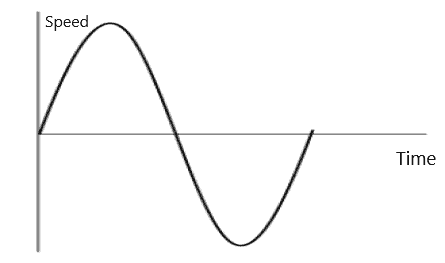We have written various articles on the topic of kinematics. Now that you are confident with the concepts like a position in physics, distance and displacement, speed, velocity, acceleration, etc. you must check your knowledge and understanding by attempting a few questions about motion.
Questions about motion with answers
In this worksheet, you will find miscellaneous motion questions that involve concepts like
- Distance and displacement
- Uniform motion and non-uniform motion
- Average speed and velocity
- Acceleration
- Graphical representation of motion
- Equations of motion in a straight line with uniform acceleration and
- Uniform circular motion
All the questions in this worksheet are of the grade levels 8, 9, 10, 11, and 12. The aim of this worksheet is to test the basics of the concept of motion.
Download this worksheet as pdf:- Motion questions pdf
Conceptual Questions
Question 1 An object has moved through a distance. Can it have zero displacements? If yes, then support your answer with an example.
Answer 1
Yes, an object that has moved through a distance can have zero displacements.
Example: Person walking along with a circular moving along a circular path, starts at point A and returns back to point A then the total distance covered would be $2\pi r$ but the net displacement of the object would be zero.
Question 2 Under what conditions are the magnitude of the average velocity of an object equal to its average speed?
Answer 2
The magnitude of the average velocity equals the average speed when the object moves in a straight line in one direction only (i.e., without changing direction).
Question 3 Can the magnitude of displacement be more than the distance.
Answer 3
No, magnitude displacement can be equal to distance but it can not be more than distance.
Question 4 What is the displacement of motion of the tip of the minute hand of a clock in one hour?
Answer 4
Zero
Question 5 Is it possible to have non-zero velocity for a time interval, while the acceleration is zero at any instant within the time interval?
Answer 5
$$acceleration=\frac{\text{change in velocity}}{\text{time taken}}$$
This shows that acceleration is zero when the change in velocity (v-u) is zero or we can say when a body is moving with uniform velocity, its acceleration will be zero. For example, if a car is moving with a constant velocity of 15m/s, then its acceleration is zero.
So it is possible to have non-zero velocity for a time interval, while the acceleration is zero at any instant within the time interval.
Question 6 What is the nature of distance-time graphs for uniform and non-uniform motion of an object?
Answer 6
For a uniform motion graph, it would be a straight line and for non-uniform motion, it would be a parabola
Question 7 What do you think about the speed-time graph given below

Answer 7
Speed being a scalar quantity can not have a negative value.
Question 8 What does the area between the v-t graph give?
Answer 8
The area v-t graphs give the displacement of the object.
Question 9 Is uniform circular motion an example of constant acceleration?
Answer 9
No
Question 10 An artificial satellite goes around the earth in a perfectly circular orbit with constant speed. Is the motion accelerated? Why?
Answer 10
Yes, as the direction of velocity is changing to keep the satellite in a circular orbit.






